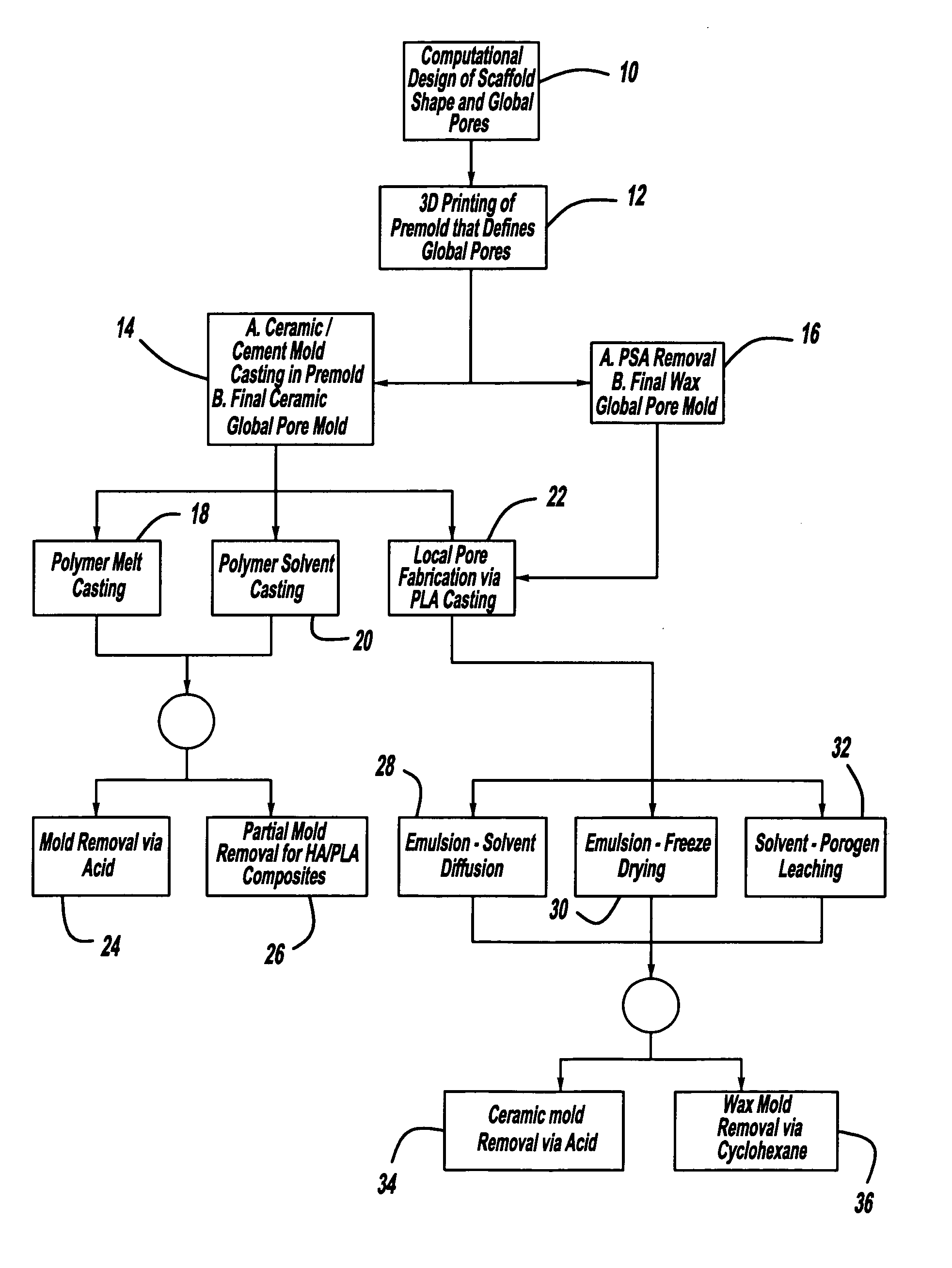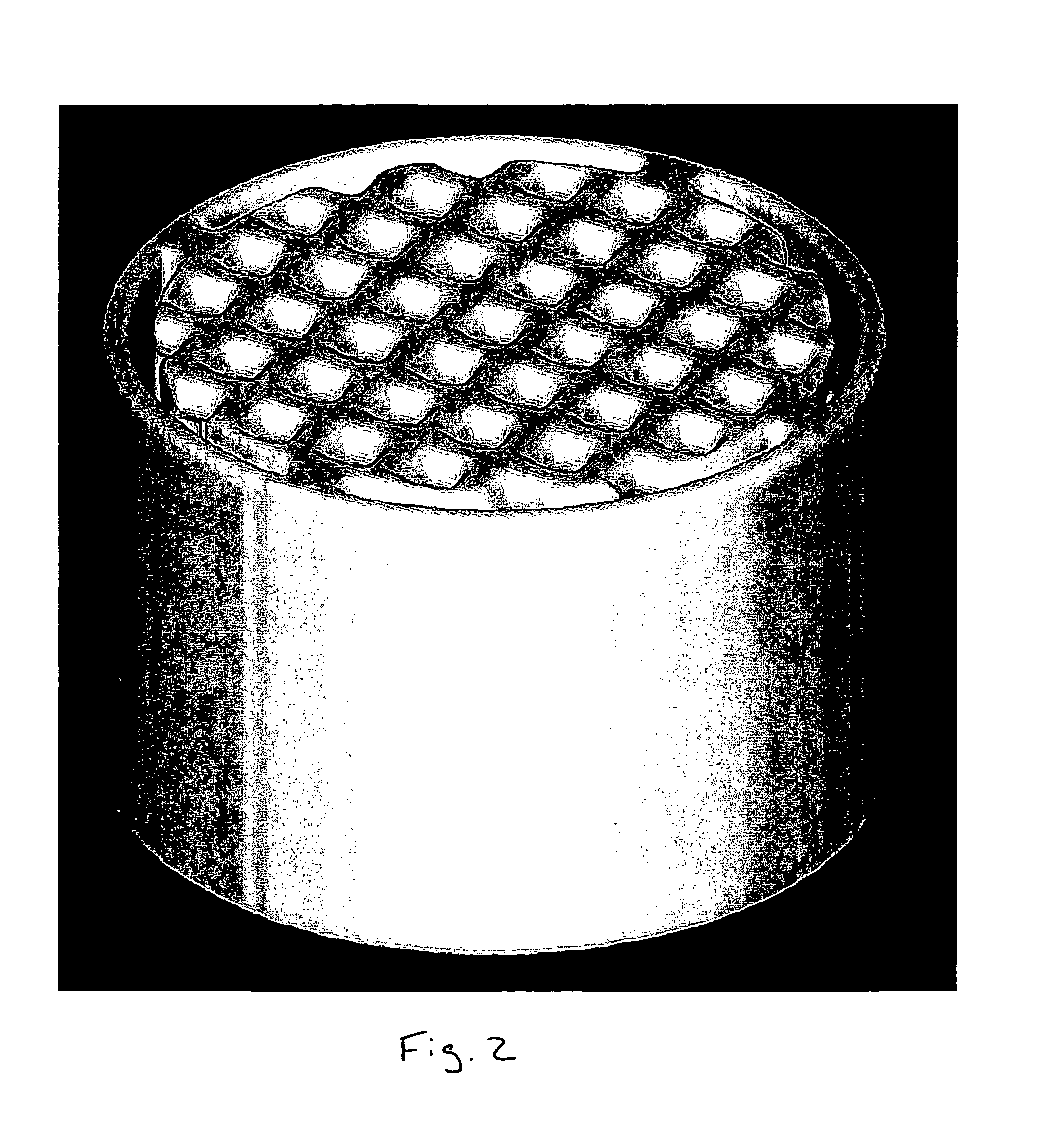Controlled local/global and micro/macro-porous 3D plastic, polymer and ceramic/cement composite scaffold fabrication and applications thereof
a technology of micro-macro-porous and micro-porous plastics, applied in the direction of 3d object support structures, program control, foundry moulds, etc., can solve the problems of difficult fabrication, difficult to precisely control the pore geometry and interconnectivity, and difficult to meet the mechanical properties of hard tissue repair, etc., to improve the control of global pore orientation, size and geometry, and the effect of reducing drug screening costs
- Summary
- Abstract
- Description
- Claims
- Application Information
AI Technical Summary
Benefits of technology
Problems solved by technology
Method used
Image
Examples
Embodiment Construction
[0042]The following description of the preferred embodiments is merely exemplary in nature and is in no way intended to limit the invention, its application, or uses.
[0043]To circumvent the limitations of the prior art and combine the benefits of local pore manufacturing and direct SFF fabrication, an indirect SFF scaffold manufacturing technique is provided. More particularly, the present invention provides a set of molds, casting methods, mold removal, and structure post fabrication modification techniques that are compatible with image-based design (IBD) methods and with solvent, melt, and slurry casting of polymers and ceramics.
[0044]The indirect SFF fabrication method of the present invention combines image based design with SFF fabrication to precisely control scaffold architecture and material composition. This method provides simultaneous control of scaffold external shape to match implant site geometry, internal architecture to yield biomimetic structures, and global pore s...
PUM
| Property | Measurement | Unit |
|---|---|---|
| particle size | aaaaa | aaaaa |
| diameter | aaaaa | aaaaa |
| diameter | aaaaa | aaaaa |
Abstract
Description
Claims
Application Information
 Login to View More
Login to View More - R&D
- Intellectual Property
- Life Sciences
- Materials
- Tech Scout
- Unparalleled Data Quality
- Higher Quality Content
- 60% Fewer Hallucinations
Browse by: Latest US Patents, China's latest patents, Technical Efficacy Thesaurus, Application Domain, Technology Topic, Popular Technical Reports.
© 2025 PatSnap. All rights reserved.Legal|Privacy policy|Modern Slavery Act Transparency Statement|Sitemap|About US| Contact US: help@patsnap.com



